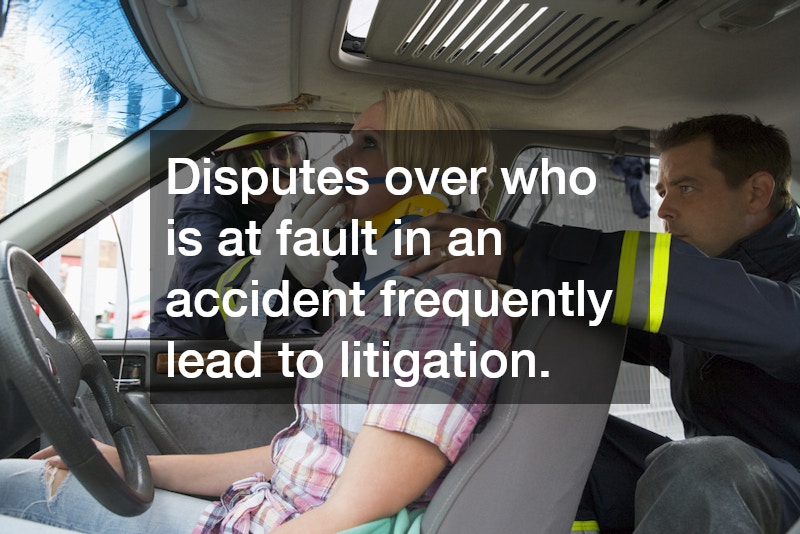Personal injury cases are not uncommon in the legal world. These cases often arise when someone is injured because of another party’s negligence. However, not all personal injury claims result in a settlement outside of court; some proceed to litigation. Understanding the reasons why a personal injury case might go to litigation can provide insights for both claimants and defendants. Below are some common reasons personal injury cases escalate to this stage.
Insufficient Settlement Offers
One of the primary reasons personal injury cases go to litigation is because the plaintiff finds the settlement offer inadequate. Insurance companies often try to minimize payouts by offering amounts that do not fully cover the plaintiff’s damages. This may include medical expenses, lost wages, and pain and suffering. Claimants, upon advice from their personal injury law firm, may decide that the offer does not justify the ordeal they’ve suffered. When this impasse occurs, taking the case to court becomes a way for the plaintiff to seek just compensation and hold the responsible party accountable.
Settling for an insufficient offer can lead to further financial strain on the injured party. Bills from the accident may continue to accumulate, exacerbating the plaintiff’s financial burden. A personal injury law firm can help evaluate whether a settlement offer is fair and adequate. By proceeding to litigation, the plaintiff has the opportunity to present their case to a jury or judge who might grant a more favorable outcome. Often, this option is also undertaken to prevent future inadequate settlements from being a norm in similar cases.
It’s essential to recognize that litigation is not merely driven by the quest for higher compensation. It can also be a matter of principle, where the plaintiff feels the need to stand up against an unjust offer. The complexities of determining fair compensation involve many factors. Only an experienced personal injury law firm can effectively navigate these waters on behalf of the claimant. Thus, if the perceived value of a claim significantly differs from the offered settlement, litigation might be the most viable path forward.
Disputed Liability
Disputes over who is at fault in an accident frequently lead to litigation. Sometimes, the responsible party may refuse to admit liability, which can hinder settlement negotiations. In some cases, both parties may claim the other is at fault, leaving the case unresolved. Such disputes require detailed examinations of evidence, which are often more thoroughly explored in a court setting. The role of a personal injury law firm becomes vital here, as they gather and present evidence to establish liability.
In a contested liability case, the need to scrutinize facts likely pushes it to litigation since the determination of fault can significantly impact the outcome. Accident reports, witness statements, and expert testimonies may all play a part in constructing the case for court. A trial provides a structured environment to dissect such evidence systematically and objectively. Moreover, the court has the ultimate authority to decide which party bears more responsibility, ensuring a resolution to the dispute. The plaintiff’s legal team, therefore, works diligently to align all pieces of evidence in support of their client’s claim.
In addition to resolving facts, litigation in contested liability cases can also serve as a deterrent to deceptive practices. By bringing a case to court, the injured party may discourage the liable defendant from dodging accountability. Often, the prospect of a court trial can motivate the defendant to reassess their stance. It can redirect their focus on resolution through settlement rather than exposure to potentially higher damages decided by a jury. Hence, disputing liability in personal injury cases often catapults them into the litigation phase.
Legal Complexities and Policy Limits
Certain legal complexities can compel a personal injury case to shift towards litigation. These complexities may arise from unique case circumstances, intricate state laws, or multi-party involvement. When the details of a case surpass what is straightforwardly resolvable, a personal injury law firm’s guidance becomes indispensable. They possess the detailed knowledge necessary to navigate these sophisticated legal landscapes. Litigation provides a formal platform to address these nuanced legal issues in front of judges who interpret the law.
Moreover, limitations on insurance policies may call for litigation if the settlement does not meet the plaintiff’s incurred damages. Insurance companies have policy limits, which might not cover the extent of the claimant’s needs. After an accident, these financial requirements can include long-term medical treatment and rehabilitation costs. If the policy maxes out and fails to suffice, a lawsuit can be filed against additional third parties potentially liable. The personal injury law firm will then pursue compensation that rightfully addresses their client’s long-standing repercussions.
The litigation process in cases with legal complexities or policy limits often serves as an eye-opener for similar future cases. It highlights the gaps in policy coverage and encourages legislative changes to better protect injury sufferers. However, it’s a strategy requiring astute legal representation to meticulously argue for a plaintiff’s rightful claim beyond existing insurance constraints. Courts then determine appropriate remedies or compensations based on facts and justice. Consequently, the pursuit of litigation clarifies these sophisticated cases that demand a more intricate legal exploration.

